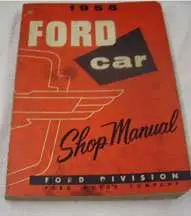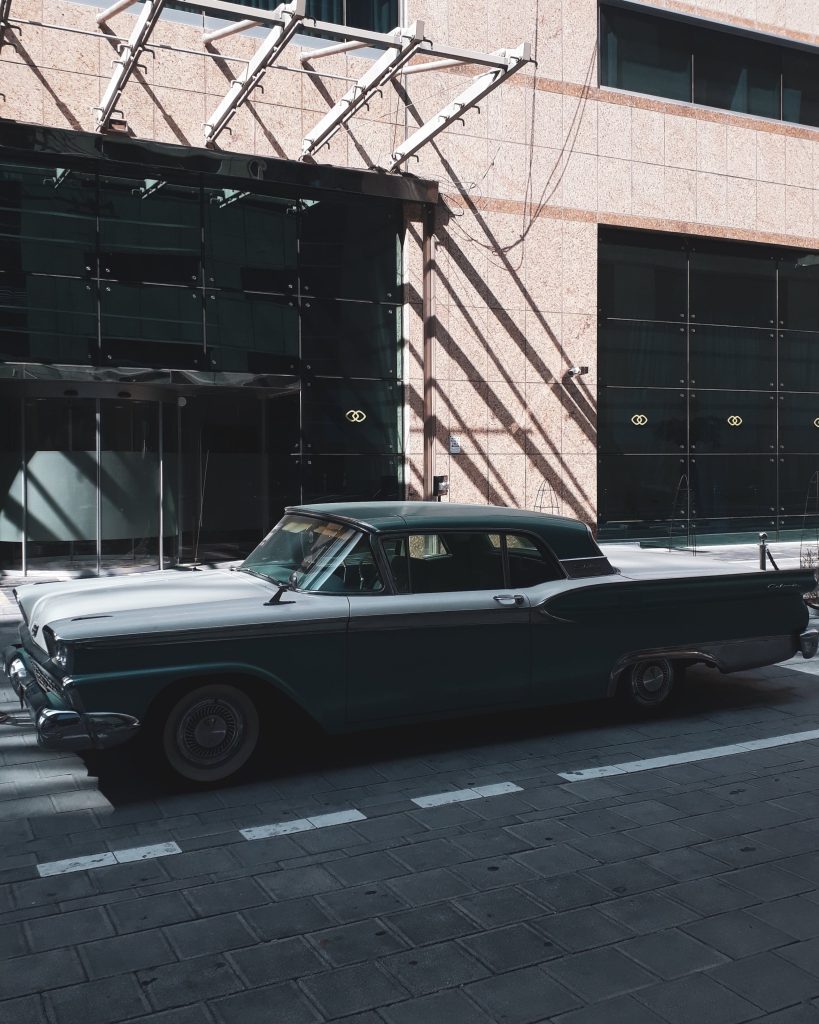Ford Fairlane
Famous for its body styles and royal use, Fairlane is a Sedan offered by Ford, and its first model may have come out much before most of you were born. Ford Fairlane produced, designed, and sold cars from 1955 to 1970, and around seven generations came with the Fairlane tag. The company delivered it in various body styles, ranging from two-door to four-door Sedan, with traditional or retractable roofs, two-door or four-door hardtops, station wagons, and much more.
1956 was the initial year Fairlane produced the vehicle close to the base model. The Ford introduced more improvements in the new generations, but the spell of the First-generation Ford Fairlane doesn’t seem to fade any soon. It’s a car still seen and admired on the roads and auctioned at enormous prices.

First-generation Ford Fairlane:
The 1955 model of Fairlane was the first stone in this lineup, being a successor to the Ford Crestline; it came up as Ford’s premium full-size offering. The very first model came in six body styles to entertain the needs of the majority, and they included:
- Crown Victoria coupe with stainless steel trim
- Crown Victoria Skyliner with a tinted roof
- Crown Victoria Skyliner with a transparent roof
- Traditional Sedans
- Victoria hardtop coupe
- Convertible Sunliner
3.7-L V6 and 4.5-L V8 engines were the energy sources of this model. Thunderbird V-8 was a 4.5-L Y- the y-block engine that the consumers could get as an option with this model. Four-door town Sedan from this series was the most popular body style for people that year.
The 1956 model also belonged to the first Fairlane generation. The company added multiple features to the last year’s model to bring out a better version later. Because of the popularity of the four-door Sedan earlier, Ford introduced Four-door Victoria Hardtop under the same title. It also introduced the two new and more powerful V8 engines, I.e., 4.8-L and 5.1-L V8 machines, in 1956. The company made the cars safer by introducing the Lifestyle safety package as a standard in the newer versions.
The Lifeguard safety package featured a safety steering wheel that was deep-centered with spokes that could flex. Double-grip door latches prevent the occupation ejection in case of a crash in this safety package. Moreover, a safety rearview mirror would collect the broken glass if it gets shattered.
Two-door Victoria hardtop in this series came with a sleeker outlook and slimmer roofline. The company marketed a two-door station wagon under the name “Ford Parkline” to compete with the Chevrolet Nomad in 1956.
Second-generation Ford Fairlane:
The next generation appeared with a new redesign that made it look lower, more comprehensive, longer, and sleeker with its lower tailfins. These cars became so popular that it was the first time after 1935 that Ford outsold Chevrolet. Fairlane 500 was a top trim level that Ford added to the lineup in 1957. Moreover, the company also added the Country Sedan to the Fairlane series. Ford-Ranchero two-door coupe utility was a big hit in 1957. Fairlane 500 Skyliner was also a technology too great for the 1950s; that introduced the retractable roof that could move the hinges to fold it down into the trunk space just through a button click. A Ford Fairlane manual could give you the complete picture of the new updates and the appropriate operation techniques.
1958 introduced quad headlights that made the car best to be featured in the fashion magazine. The grille resembled the Thunderbird, and new FE V8 engines replaced the previous power source.
1959 witnessed the Ford Galaxie, a new top-level full-size model by Ford.
Third-Generation Ford Fairlane:
The third generation of Ford Fairlane is all about the previous Fairlane models being revamped to exhibit a newer and better display. While the Galaxie remained at the top with the “full-sized” Ford title, the Fairlane 500 got demoted to the level of “midsize” Ford. 1960 and 1961 models featured the “FORD” in chrome black color on their hoods, boasting the pride of its parent company.
Fourth-Generation Ford Fairlane:
For the following years, the Fairlane featured a unibody frame, but the body boasted dubbed torque boxes; they were the four boxes in the lower body of the car designed to absorb road shocks by moving slightly in the vertical plane. The suspension was a typical short-long arm-independent arrangement in front. The Fairlane initially came only in two-door and four-door sedan body styles.

Fifth-Generation Ford Fairlane:
The whole-body revision in 1966 made the Fairlane resemble the full-sized Ford Galaxie, which had vertically placed dual headlights. The manufacturers introduced the fifth generation XL, GT, and GTA trim levels. 1967 Fairlane introduced many additional safety features, including a shock-absorbing steering column, four-way hazard flashers, shoulder belt anchors, and a dual-chamber braking system.
Sixth and Seventh-Generation Ford Fairlane:
1968 model from the sixth generation was also a redesign that resembled the Ford Galaxie but grew in dimensions except for the wheelbase. Fairlane wagons and the new 1969 Cobra model were the highlights of the sixth generation.
Fairlane 500 was the base model for the seventh generation, and new power options were introduced. American Ford bid Farewell to the Fairlane this year, but the Australian Ford continued making cars under this title through 1978.
Care and Repair of your Fairlane
Many of the Ford Fairlanes still in operation, have been lovingly restored by hobbyists and collectors. To do this, you will need a repair manual, parts catalog, and an owner’s manual on hand.
Frequently Asked Questions
When did Ford make a Fairlane 500?
The Ford Fairlane 500 Skyliner was manufactured for the model years 1957-1959
What replaced the Ford Fairlane?
After the discontinuation of the Fairlane in 1970, it was replaced by the Ford Torino in the North American market. The Torino was a larger and more upscale vehicle.
What was the Fairlane named after?
Fair Lane, Henry Ford’s Estate

